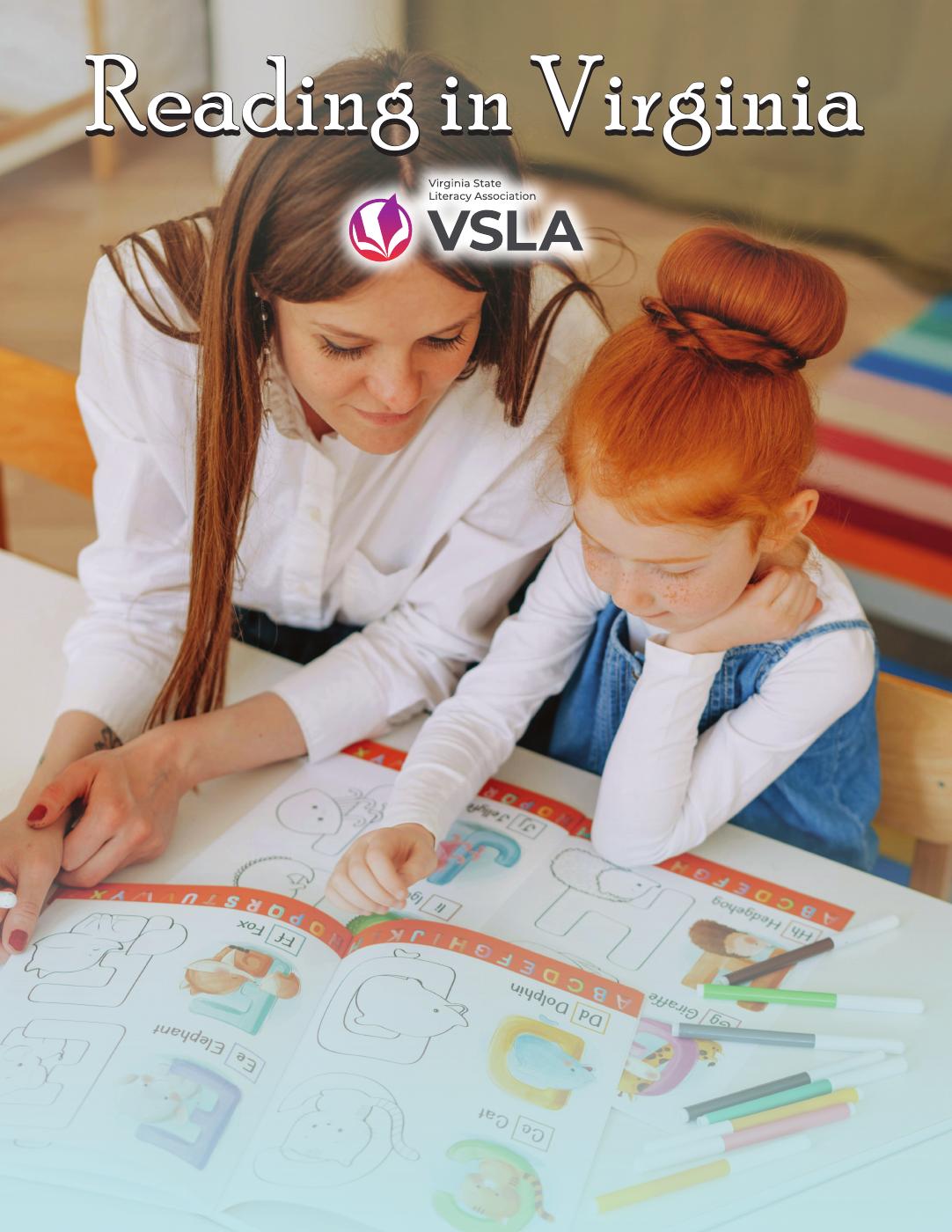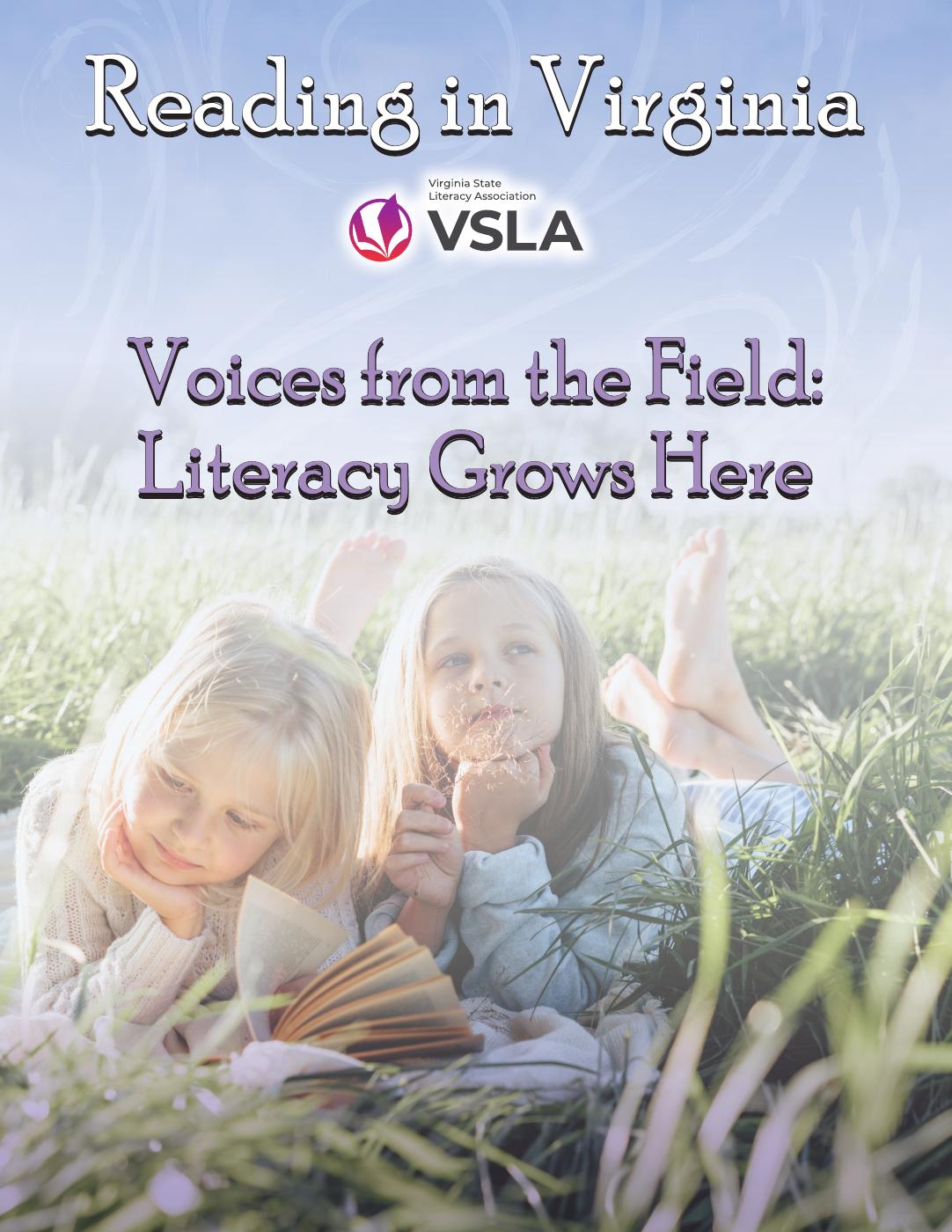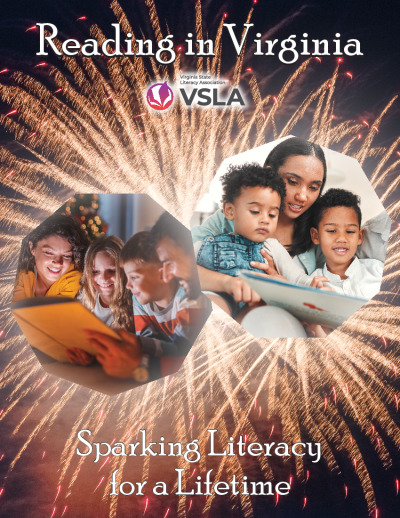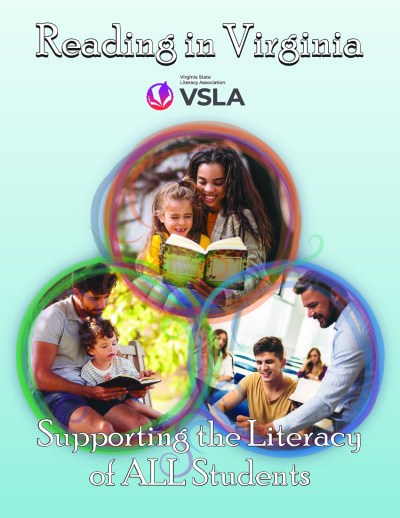Call for Manuscripts: Reading in Virginia
2025-2026 Call for Manuscripts: Reading in Virginia
Reading in Virginia (RiV) is the peer-reviewed journal of the Virginia State Literacy Association. It publishes articles to support literacy instruction for and by researchers, specialists, and teachers. RiV offers a forum for the exchange of information on current theory, research, and classroom application, as well as to foster connections between literacy teachers, librarians, specialists, and researchers in Virginia and the United States as a whole. We broadly conceptualize literacy to include speaking, listening, reading, writing, and creating within and across grades and disciplines.
We seek original manuscripts that describe current topics, issues, and events of interest to all levels of literacy educators. Possible examples include research reports, teacher action research, classroom applications of literacy research, research-based teaching strategies, and literature reviews.
This journal is published in a digital format. Manuscripts of varying lengths are accepted, but should not exceed 10,000 words. RiV is published annually. We believe that many voices and many experiences are needed to fully discuss and share what is happening in the field of literacy, and how we can best grow together. Please consider sharing your classroom and research expertise with colleagues in Virginia and beyond!
The submission window is now OPEN and manuscripts will be accepted on a rolling basis with priority given to authors who submit manuscripts January 2. Manuscripts will be peer reviewed as part of the publication process.
Author Guidelines: Reading in Virginia
Manuscripts will be evaluated for the following elements:
1. Relevance to the audience (literacy teachers, specialists, coaches, librarians, and researchers).
2. Significance and importance of the topic and treatment.
3. Sufficient grounding in literacy theory and research
Additionally, manuscripts will be evaluated for clarity and organization of writing, appropriate tone for the audience, and overall writing quality, including mechanics. Papers should adhere to American Psychological Association (APA) formatting according to the 7th edition.
Preparing Your Manuscript: Style and Format
All submissions must be digital. Word document format is required for text, tables, and figures (e.g., docx; .doc). Pdf manuscripts will be returned for reformatting into Word. Any submitted artwork may be saved in other appropriate formats (e.g., .pdf, .jpeg, .tiff). Please prepare a blinded manuscript using a 12-pt Times New Roman font, double-spaced text with one-inch margins. All elements should adhere to APA 7 format, including headings and subheadings.
Please include a 50 to 75 word abstract at the beginning of your manuscript.
Submit your blinded manuscript to BOTH Dr. Joan Rhodes and Dr. Corrie Kelly at joan.rhodes@vslatoday.org and corrie.kelly@vslatoday.org. In your email, please include your contact information, full names of all authors as they should appear in the journal, and affiliations. Note that VSLA membership is not a prerequisite for submission and will not affect the review process.
Frequently Asked Questions (FAQs)
Q: What is a blinded manuscript?
A: A blinded manuscript does not contain any references to the author(s) or location in order to ensure anonymous review.
Q: What is the review process?
A: All manuscripts are first read by the editors for basic adherence to the submission guidelines and overall form and style. Manuscripts that meet the criteria are then sent to at least two members of the Editorial Board or to a guest reviewer for double-blind peer review. This means that reviewers have no knowledge of your identity, and you won’t know theirs either. This ensures a fair, unbiased review. Reviewers evaluate each manuscript on the elements described above and offer constructive comments to help improve the clarity and content. Reviewers usually ask for specific edits and revisions, and this is a normal part of the process. Then the editors review all comments, compile them for the authors, and return the manuscript for revision. Editors will also include a timeline for resubmission.
When you receive the comments, read them carefully and consider how to address each in your manuscript. Use tracked changes to make your revisions visible. Return your revised manuscript to the editors (again, .docx or .doc format). Sometimes revisions are sent for another round of peer review by the same reviewers, so don’t ‘unblind’ it yet. The editors will let you know the final decision to accept the manuscript or not. If accepted, you will be asked to unblind as appropriate, and then sit back and wait for publication.
Q: I recently presented my teaching idea at an education conference. Can I still write about it?
A: YES! In fact, conference presentations often make excellent starting points for articles. Consider any reviewer feedback you received on the conference proposal. Also consider audience feedback and participation during your presentation. Did they have questions about a particular aspect of your content? Did they get really excited about a specific element? Those are places to develop your ideas more. You can use the proposal and any feedback as a starting point since both proposals and manuscripts follow similar outlines.
Q: Can I write an article with a colleague?
A: Sure! If your article topic is something you have developed with colleagues, it’s usually easiest to write together. Just be sure to blind your work so that your school location and any teacher/student names are kept anonymous.
Q: Can I use student work samples?
A: If you have student work samples that are vital for your manuscript, be sure to remove all names and identifying information. Pseudonyms are best for any school and classroom examples in order to ensure anonymity. Obtaining written permission from the student (if of age) or the students’ family (minors) is important for all samples.
Q: Can I use artwork, tables and/or charts?
A: Yes, as long as you have permission from the original creators or authors.
Reading in Virginia Manuscript Guide
Use this guide as a resource for planning your Reading in Virginia article. Remember that all article manuscripts should follow APA 7 formatting (free resources for this format are embedded below). Upon completion of your manuscript, please submit via email to BOTH joan.rhodes@vslatoday.org and corrie.kelly@vslatoday.org.
Abstract: In 50-75 words, provide a brief summary that provides a concise understanding of your manuscript's main ideas and findings.
Introduction: Hook your reader! What will you be writing about? Why is it important/relevant in today’s schools? What are a few key pieces of research that support the importance of this topic?
TIP: End your introduction with a “road map” thesis statement for the reader. What will you be presenting in your article and in what order?
Literature/supporting research: In 2-3 paragraphs, describe the research that supports your topic, with a focus on more recent, peer-reviewed studies. What are the key takeaways? How do they affect stakeholders (e.g., students, teachers, administrators)? What does the research say is most effective for literacy development on your selected topic?
TIP: Use APA 7 headers to organize your writing for the reader and ensure a logical flow. See the Purdue Online Writing Lab (OWL) for a free overview of APA 7 formatting and style guides.
TIP: To find literature/supporting research, be sure to consult research databases. If you do not have access to databases, consider exploring
Google Scholar https://scholar.google.com
ERIC (tick the boxes for peer-reviewed and full-text available) https://eric.ed.gov/?journals
Research Gate https://www.researchgate.net or ILA journals such as The Reading Teacher, Journal of Adolescent and Adult Literacy, or Reading Research Quarterly. Many school libraries receive journal issues for teacher reference.
Methodology: This is a most important part of your manuscript. Describe how your research was conducted. Be through and provide as much detail about your work and your process as possible. This will help other interested in duplicating your procedure.
Findings: What were the results of your project? What did you learn from your research?
Implications/Outcomes: What implications does this piece of literacy research have for students, teachers, and other stakeholders? What outcomes can be expected if this topic is implemented (e.g., What successes would students be able to experience because of this literacy approach? What would teachers expect to see in their classrooms? How did your findings relate to the literature you reviewed?)
Conclusion: In your conclusion, refer to your earlier “road map” thesis statement and be sure that you’ve addressed each of the points you intended to address for your reader. Then, summarize the key takeaways from your article. What do you want your readers to remember?
References: Include a reference list of any citations or literature you noted above to support your topic. Be sure to use APA 7 reference formatting. Be sure that your manuscript is de-identified. Authors’ names should be listed as Author in the reference section.
Extra information: If you are using art, tables and/or charts, ensure that you have written permission to use this resource from the original creator(s)/author(s). If you have student work samples to illustrate your activity, please remove names/identifying information. Please obtain permission from the student/parent to share.





